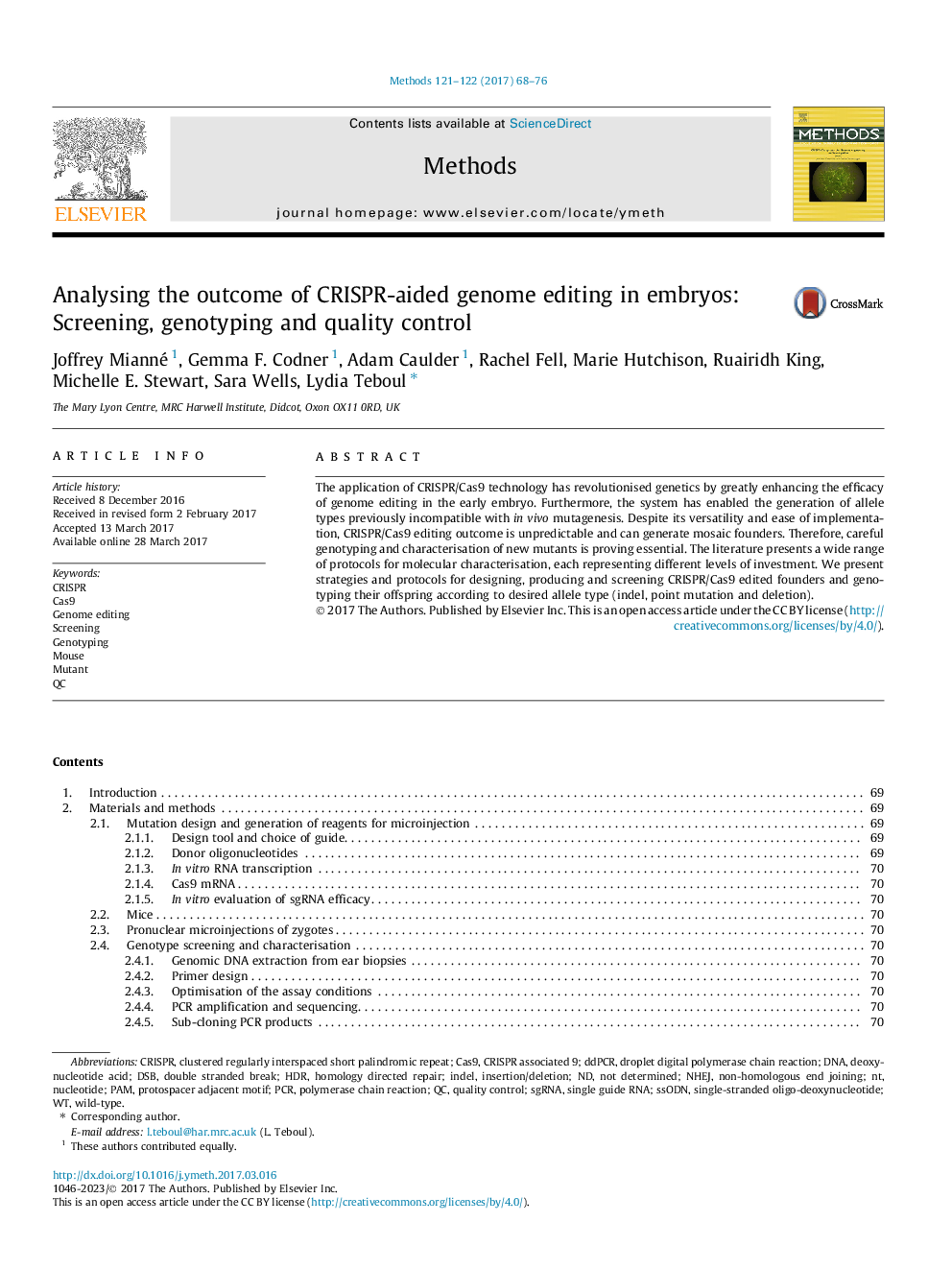| Article ID | Journal | Published Year | Pages | File Type |
|---|---|---|---|---|
| 5513599 | Methods | 2017 | 9 Pages |
â¢Genome engineering tools such as CRISPR/Cas9 generate mosaic founders.â¢The type of the desired mutation directs how mutagenesis outcome should be analysed.â¢Efficient strategies for the analysis of each of these mutant allele types are detailed.â¢The founder generation can be screened for the presence of the desired mutation.â¢Mutant genotype can only be established on germ line transmission.
The application of CRISPR/Cas9 technology has revolutionised genetics by greatly enhancing the efficacy of genome editing in the early embryo. Furthermore, the system has enabled the generation of allele types previously incompatible with in vivo mutagenesis. Despite its versatility and ease of implementation, CRISPR/Cas9 editing outcome is unpredictable and can generate mosaic founders. Therefore, careful genotyping and characterisation of new mutants is proving essential. The literature presents a wide range of protocols for molecular characterisation, each representing different levels of investment. We present strategies and protocols for designing, producing and screening CRISPR/Cas9 edited founders and genotyping their offspring according to desired allele type (indel, point mutation and deletion).
